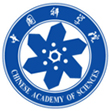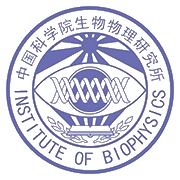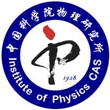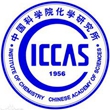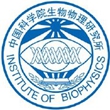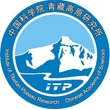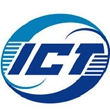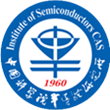Sessions 5:Information Sciences
John E. Bowers

Character introduction
Experience of education and training
Postdoctoral Ginzton Laboratory Stanford University Stanford, CA 1981-1982
Ph.D. Applied Physics Stanford University Stanford, CA 1981
M.S. Applied Physics Stanford University Stanford, CA 1978
B.S. Physics Univ. of Minnesota Mpls., MN 1976
Positions
2015-present Deputy Director, American Institute of Manufacturing (AIM) of
Integrated Photonics
2012-present Professor, Technology Management Program
2011-present Professor, Materials Department
2008-present Director, Institute for Energy Efficiency, UCSB
1987-present Professor, Department of Electrical and Computer Engineering, UCSB
2009-2014 Director, Center Energy Efficient Materials, DOE EFRC
1999-2008 CTO and cofounder, Calient Networks.
1996-2003 Director, Multidisciplinary Optical Switching Technology Center (MOST)
1998-2001 Executive Director and Cofounder, Center for Entrepreneurship and
Engineering Management, UCSB.
1996-1998 President and cofounder, Terabit Technology (acquired by Ciena).
1982-1987 AT&T Bell Laboratories. Member of Technical Staff
1981-1982 Ginzton Laboratory, Stanford University. Research Associate.
1978-1979 Honeywell Corporate Materials Science Center. Scientist.
Research and achievements
John Bowers is Director of the Institute for Energy Efficiency and a professor in the Departments of Electrical and Computer Engineering and Materials at the University of California, Santa Barbara. His research interests are primarily concerned with silicon photonics, optoelectronic devices, optical switching and transparent optical networks and quantum dot lasers. Bowers received the M.S. and Ph.D. degrees from Stanford University and then worked for AT&T Bell Laboratories before joining UCSB. Bowers is a fellow of the IEEE, OSA and the American Physical Society, and a recipient of the IEEE Photonics Award, OSA/IEEE Tyndall Award, the IEEE LEOS William Streifer Award and the South Coast Business and Technology Entrepreneur of the Year Award. He is a member of the National Academy of Engineering and the National Academy of Inventors.
Postdoctoral Ginzton Laboratory Stanford University Stanford, CA 1981-1982
Ph.D. Applied Physics Stanford University Stanford, CA 1981
M.S. Applied Physics Stanford University Stanford, CA 1978
B.S. Physics Univ. of Minnesota Mpls., MN 1976
Positions
2015-present Deputy Director, American Institute of Manufacturing (AIM) of
Integrated Photonics
2012-present Professor, Technology Management Program
2011-present Professor, Materials Department
2008-present Director, Institute for Energy Efficiency, UCSB
1987-present Professor, Department of Electrical and Computer Engineering, UCSB
2009-2014 Director, Center Energy Efficient Materials, DOE EFRC
1999-2008 CTO and cofounder, Calient Networks.
1996-2003 Director, Multidisciplinary Optical Switching Technology Center (MOST)
1998-2001 Executive Director and Cofounder, Center for Entrepreneurship and
Engineering Management, UCSB.
1996-1998 President and cofounder, Terabit Technology (acquired by Ciena).
1982-1987 AT&T Bell Laboratories. Member of Technical Staff
1981-1982 Ginzton Laboratory, Stanford University. Research Associate.
1978-1979 Honeywell Corporate Materials Science Center. Scientist.
Research and achievements
John Bowers is Director of the Institute for Energy Efficiency and a professor in the Departments of Electrical and Computer Engineering and Materials at the University of California, Santa Barbara. His research interests are primarily concerned with silicon photonics, optoelectronic devices, optical switching and transparent optical networks and quantum dot lasers. Bowers received the M.S. and Ph.D. degrees from Stanford University and then worked for AT&T Bell Laboratories before joining UCSB. Bowers is a fellow of the IEEE, OSA and the American Physical Society, and a recipient of the IEEE Photonics Award, OSA/IEEE Tyndall Award, the IEEE LEOS William Streifer Award and the South Coast Business and Technology Entrepreneur of the Year Award. He is a member of the National Academy of Engineering and the National Academy of Inventors.
Topic: Silicon Photonic Integrated Circuits for Timing, Navigation and Data Communications
Abstract The functionality of photonic integrated circuits (PICs) is rapidly increasing and is having a major impact on applications in timing, navigation and data communications. Photonics can reduce energy consumption in information processing and communications while simultaneously increasing the interconnect bandwidth density. With the use of photonic integration and fiber optics, and the elimination of electrical line charging dissipation, we can save integrated circuit power by transmitting data from 1 mm to 1 km with the same energy (20 fJ/bit) and simplicity as local electrical wires on chip. A focus of our research is on using quantum dot (QD) lasers and integration on silicon for lower threshold and higher efficiency sources, higher temperature operation, isolator free operation, and superior mode locking capability. A recent example includes a 4.1 Tbps, 60 wavelength, 32 Gbaud PAM-4 transmitter using a single mode locked quantum dot laser.
Previous Ming Liu
Next Jonathan Knight
